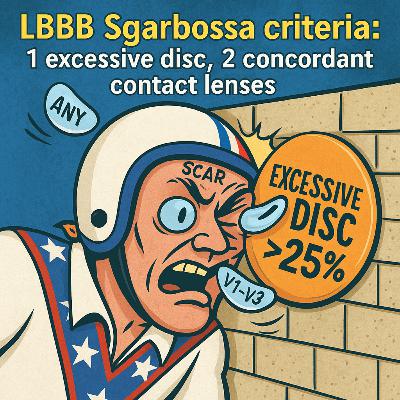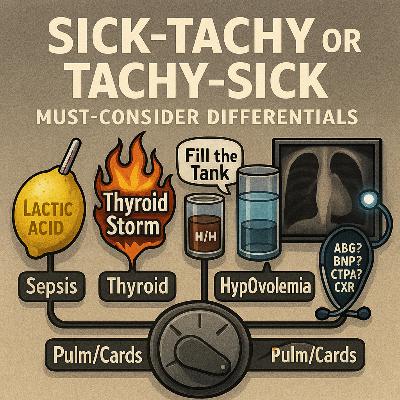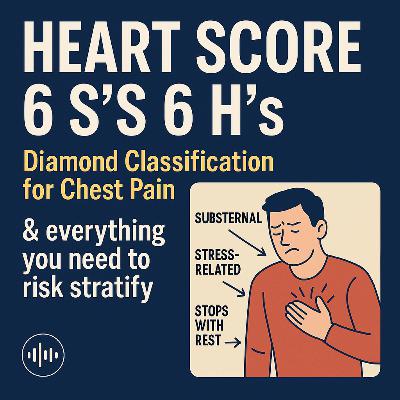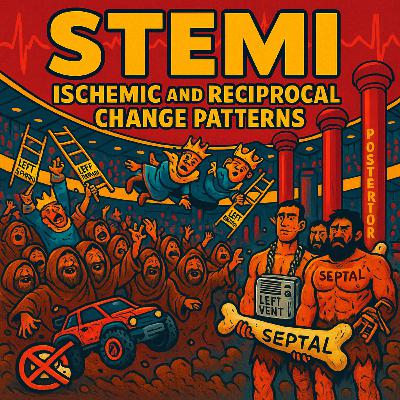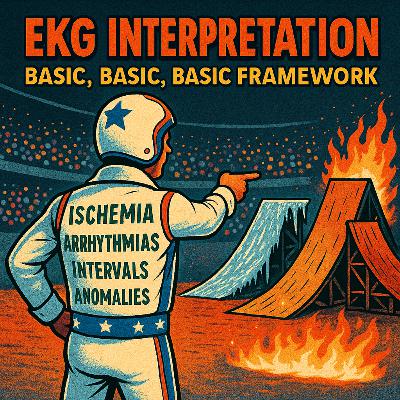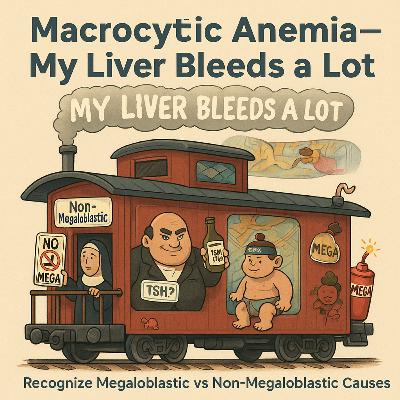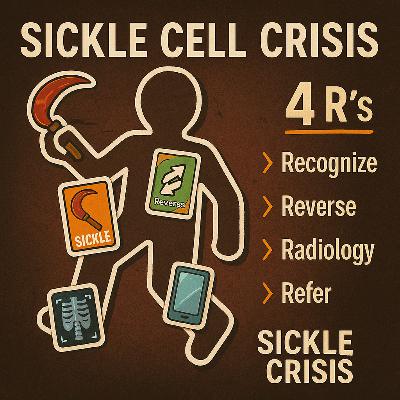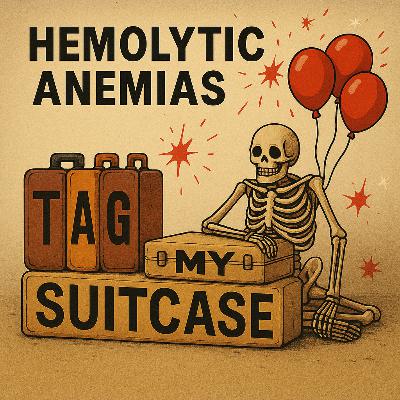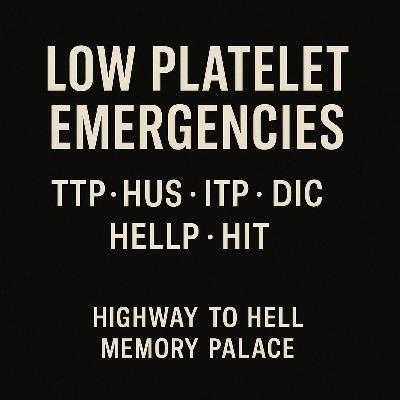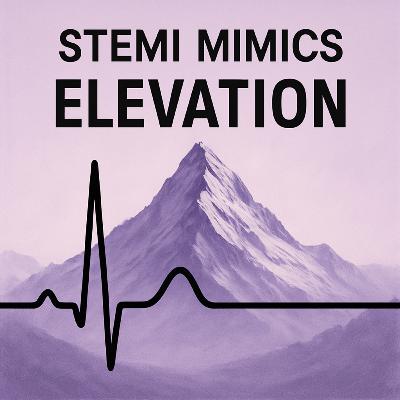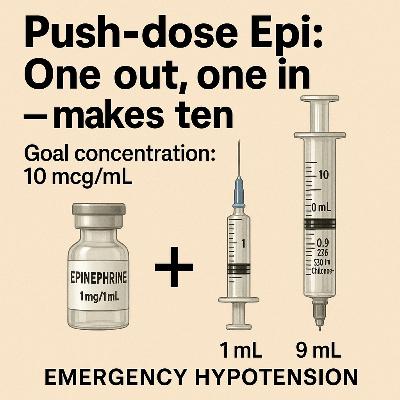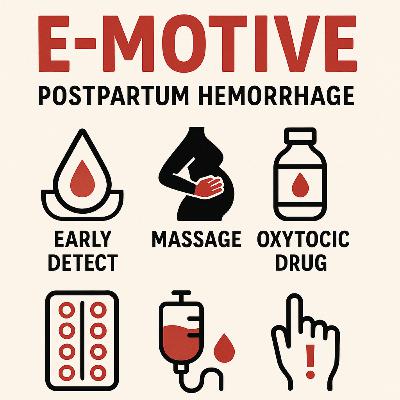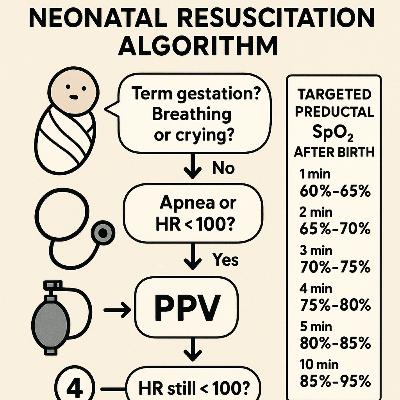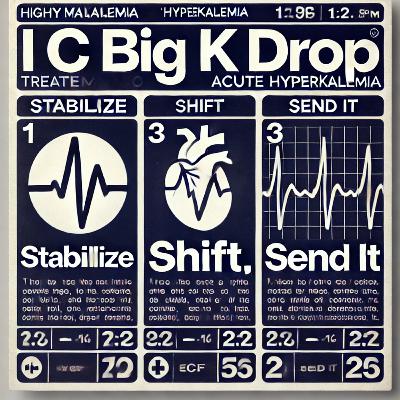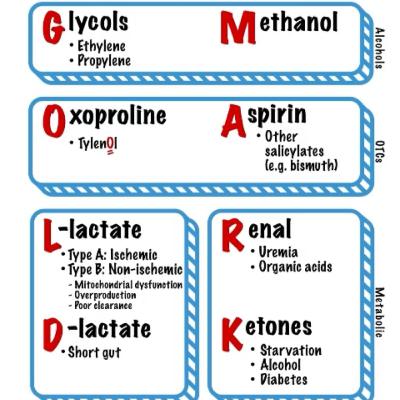LBBB Sgarbossa Criteria: 1 Excessive Disc, 2 Concordance Contact Lenses
Description
When a left bundle branch block (LBBB) throws a wrench into your ECG interpretation, how do you know if it’s a STEMI… or just baseline noise?
In this unforgettable episode, we ride full throttle into the wild world of wide QRS complexes, Scarbossa criteria, and the modified rules that help unmask true occlusion amidst the electrical chaos.
Visualize Evel Knievel launching off the QRS ramp — only to slam into the Left Bundle Branch Block cinder block. His forehead tattoo reads “Scar,” and as he collides, contact lenses fly from his eyes — one labeled “Any Lead ↑1mm” and the other, “V1–V3 ↓1mm” — representing concordant ST changes in opposite directions. Meanwhile, a giant frisbee labeled “EXCESSIVE DISC >25%” flies through the scene, reminding us of the Smith-modified criteria for proportional discordant ST elevation.
You’ll learn:
• Why LBBB and paced rhythms mask the usual signs of infarction
• What “appropriate discordance” really means
• The 3 ways Scarbossa criteria cut through the noise
• How to visually anchor each criteria with unforgettable imagery
• And why you only need one criteria to trigger concern
This episode breaks down advanced electrophysiology into a high-octane, cartoon-style teaching experience you’ll never forget. Whether you’re a medical student, resident, PA, NP, or attending, this episode locks in high-yield ECG wisdom that sticks.
⸻
✅ Smith-Modified Sgarbossa Criteria
Used in Left Bundle Branch Block (LBBB) or Ventricular Paced Rhythm to detect Occlusion MI (OMI):
You need only ONE of the following three to be positive:
1. Concordant ST Elevation ≥1 mm in any lead with a positive QRS
➤ ST segment is in the same direction as the QRS (both upright)
2. Concordant ST Depression ≥1 mm in leads V1–V3
➤ ST segment and QRS are both downward in V1–V3 (anterior leads)
3. Proportionally Excessive Discordant ST Elevation:
➤ ST Elevation is ≥25% of the depth of the preceding S wave in a lead with a negative QRS
➤ This replaces the old “5 mm” rule with a more accurate proportional one
💡 You only need one of these three criteria to suspect occlusion MI in the setting of LBBB or ventricular pacing.
Keywords: LBBB, Scarbossa Criteria, Modified Scarbossa, STEMI Equivalent, ECG Interpretation, Emergency Medicine, Paced Rhythm, Smith Criteria, Evel Knievel, Visual Mnemonics, Wide QRS, Electrocardiography, ST Elevation, ST Depression, STEMI Mimic, Cardiology, EM Boards

